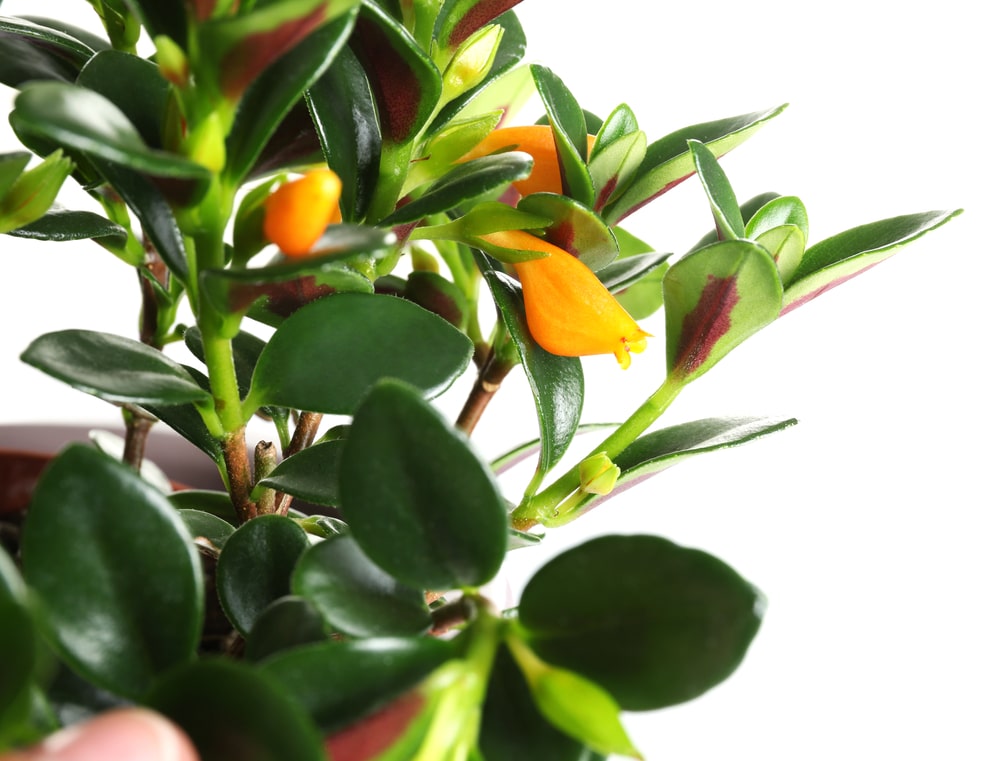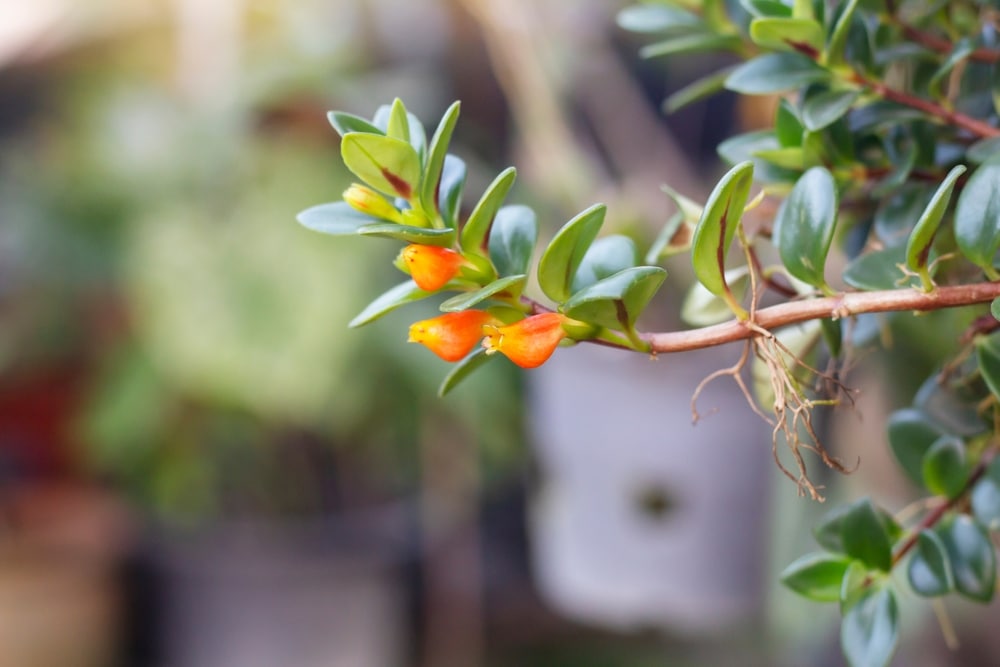The Goldfish plant is aptly named because of its tubular orange-red flowers that look like a swimming goldfish.
| Botanical Name | Columnea gregarious |
| Common Name | Goldfish plant |
| Plant Type | Perennial |
| Flower Color | Orange-red flowers that appear to be small goldfish |
| Size When Mature | 30 to 36 inches |
| Bloom Time | Summer |
| Sun Requirements | Bright indirect light |
| USDA Hardiness Zones | 10 and 11 |
| Soil PH Range | 6.0 to 6.5 |
| Soil Type | Loose, well-draining |
| Water Needs | Low |
| Native Area | Central America, Brazil |
What you Need to Know About the Goldfish Plant
Cute and intriguing name aside, the Goldfish plant, or otherwise known as Columnea gregarious, is an epiphyte that can do well as an outdoor specimen or a houseplant. Despite sharing its moniker with an easy-care fish species, the goldfish plant will require a set of specific growing requirements if you want it to thrive in your home.
The tropical plant bursts into orange-red flowers in the summer under the right conditions and can decorate any space in your house with its uncommon color and foliage. The stems can grow up to three feet and dangle or cascade down from hanging baskets or containers. Also, the waxy leaves are waxy and considered as having semi-succulent characteristics.
Caring for the Goldfish plant can be a bit tricky, but once you get it right you’ll be rewarded with a unique and interesting specimen you can show your friends.
How to Care for the Goldfish Plant
Here’s everything you need to know about growing and caring for a thriving Goldfish Plant
Light
Although classified as a tropical plant, the Columnea gregarious should not be planted or placed in an area that gets direct sunlight. In the wild, goldfish plants are usually located in dappled sun and underneath canopies of bigger trees. Its foliage can be easily burned if it gets exposed to direct sunlight within an hour.
Bright and indirect light is the best light condition for your Goldfish plant. It can be in a south-facing window or on your porch, or any place that gets bright light throughout the day. You can supplement with grow light to get its development up to speed.
Water and Soil Needs
Since the goldfish plant is related to the African violet, its soil should be similar as well. The media should be quick-draining and light, with sphagnum moss being the best option. You can use standard potting mix in a pinch, but you will have to amend with equal parts vermiculite or perlite.
Once established, the goldfish plant can take a missed watering or two. What’s important is that you have to keep the humidity and moisture levels around Columnea gregarious high to avoid drying out the foliage. Don’t allow the soil to completely dry out, and mist the plant daily to keep it happy. You can add a humidifier into the room or have a saucer filled with pebbles and water near the goldfish plant.
Temperature Requirements
The Goldfish Plant can grow in USDA zones 10 and 11. It doesn’t require too much warmth, though. A room temperature of between 65 to 75 degrees F should be okay for goldfish plants to live in.
Do not water your goldfish plants with cold water as it will cause damage. Also, Columnea gregarious is sensitive to frost and will show frost damage in environments with temperatures 55 degrees F and below.
Fertilizer
The best fertilizer to use on a Goldfish Plant is a liquid supplement that’s high in phosphorus content.
The goldfish plant’s highlight is easily the curiously-shaped blooms that appear in late spring or summer. To encourage a flush of bright orange-red flowers, you should start feeding your plant a half-dose of liquid fertilizer that has a high phosphorus content. A 10-30-10 liquid fertilizer product should be given under the manufacturer’s directions and during the spring and summer seasons.
It’s worth noting that goldfish plants like to be root bound, which means that you can allow the plant to stay in its current container for another year or so. Deadhead in summer to get more flowers, then cut the stems back in fall to encourage a bushier growth habit.
Common Diseases
You won’t run into too many pest concerns with a Goldfish plant, but it can be affected by the occasional mealybug, aphid, or spider mite infestation. There’s also the problem of root rot that’s mainly caused by overwatering.
Thankfully, the insects are easy to detect and remove. Regularly inspect and spray your goldfish plant with neem oil or soap and water to discourage the pests from staying for too long. Yellowed leaves and black stems are a sign of root rot- when this happens, stop watering and allow the soil to dry out. You can use scissors to remove diseased foliage and stems to prevent fungi from spreading.
Goldfish Plant Propagation
Goldfish plants are interesting plant specimens, and if you want to grow more of them then you can propagate through stem cuttings.
To propagate your goldfish plant you’ll need a small pot with loose, well-draining mix and a pair of sharp scissors. Take a close look at your plant and choose a healthy specimen that has several leaf nodes and is around three to four inches in length.
Cut using your scissors, then remove the lower sets of leaves. Retain the top foliage and dip the stem into the prepared pot. It’s important that you keep the soil and stem moist by misting or watering, and away from direct sunlight. After four to eight weeks you’ll see that the stems have rooted and are starting to show new growth. At this point, you can repot in a larger container and care as a separate goldfish plant.


